Black foods are available in many forms, and I will help you discover them all. Get ready to note down popular fruits, vegetables, legumes, and preserved foods that come in this mysterious color.
The items in this comprehensive list of black foods are arranged in the order of popularity, so as you scroll down, prepare for more exotic options.
Stay tuned when you reach the end of this post for the extra lists of must-know fruits and vegetables in black. Now, let’s delve into the wonderful world of black foods!
23 Black Foods in World Cuisine with Filters
There are 23 significant black food items in the world, and I will tell you everything you need to know about them. All you need to do is to read on and use the given interactive filters.
These filters help arrange the food items according to suitable labels, including condiments, dairy, dishes, fruits, grains, seafood, seeds, and vegetables. They will make your reading experience more fruitful.
Chocolate
- Candy/confectionery
Chocolate is a globally famous black food derived from cocoa beans. This rich and bitter food has a history of about 4000 years since it first appeared in ancient Mesoamerica, though solid chocolate was only invented in the mid-19th century.
People produce chocolate in liquid, paste, or solid forms. Besides dark chocolate, there are also raw chocolate (unroasted cocoa beans), milk chocolate (with milk powder), and white chocolate.
Do you know that one pound of chocolate requires 400 cocoa beans? Dark, unsweetened chocolate is a wholesome snack in moderate amounts.
Dark Soy Sauce
- Condiments
Dark soy sauce is a traditional Chinese liquid condiment widely used in China and many Asian countries. Its main ingredient is fermented soybean paste that undergoes a very heavy brine.
Compared to regular soy sauce, which has a reddish-brown color, dark soy sauce has a more robust, pungent, and savory flavor with a richer umami feel.
Dark soy sauce is an excellent substitute for soy sauce in many dishes, such as stir-fries, noodles, sauces, marinades, stews, and braised dishes.
Black Pepper
- Condiments
- Fruits
Black pepper is one of the world’s most traded spices. Originating from South India, it is now grown in other tropical countries as well.
Black pepper comes in small, round, slightly wrinkled berries that turn black upon drying. These whole berries are known as peppercorns, which are used whole or ground into powder to use in various dishes, from savory stews to spiced desserts and treats.
Black pepper is famous for its sharp, pungent flavor and heat. Though a daily staple now, this spice was extremely valuable and even used as a currency in ancient times.
Vanilla Pod
- Condiments
- Fruits
Vanilla pod, or vanilla bean, is the fruit of the vanilla plant, which is native to Mesoamerica and South America. Each black pod contains numerous vanilla seeds, which are a valuable spice for preparing various baked dishes, desserts, and beverages.
Vanilla pods are processed into vanilla extract, powder, and sugar, which all impart a sweet, creamy, and floral scent to foods and drinks.
Authentic vanilla beans are the second most expensive spice, only behind saffron, so most vanilla extract is, in fact, an imitation product synthesized in the labs.
Black Olive
- Fruits
- Vegetables
Black olive is the ripe fruit of the olive tree and is an important food ingredient in many Mediterranean and Middle Eastern countries.
Young olives are typically pale yellow or brown, but they will turn to black or a dark shade of purple if left on the tree until fully mature. Black olives are milder and sweeter than their younger counterparts.
Sometimes, black olives also refer to cured and brined olives, which come with a salty and savory taste.
Black Grape
- Fruits
Black grape is one of the most popular grape colors. Many black grape varieties are typically sweeter and juicier than comparable green or white grapes.
The smooth, soft consistency and the mellow flavor of their flesh are a few key characteristics of black grapes.
There are many ways to enjoy black grapes, such as eating them raw, whipping up salads, garnishing smoothies, making wine, etc.
Blackberry
- Fruits
Blackberry is a hugely popular fruit in many North American and European countries. Its highlights include the deeply sweet flavor, which is mixed with some tartness, and the juicy, succulent texture.
Thanks to their high vitamin, antioxidant, and fiber content, blackberries are a wholesome ingredient for smoothies, salads, cakes, and more. Eating this fruit in its raw state is also awesome.
Interestingly, blackberries aren’t technically a berry but rather an aggregate fruit.
Black Chia Seed
- Seeds
Black chia seed is the most common variety of chia seeds, which are oval-shaped edible seeds of a plant native to Central America.
Rich in fiber and antioxidants, black chia seeds make a nutritious addition to many culinary recipes, such as smoothies, salad dressings, pudding, or baked goods. To use chia seeds in cooking, first, soak them in water until they acquire a white, gel-like texture.
The Aztecs once considered chia seeds one of their staple foods. Today, many people around the world widely enjoy these seeds as a superfood.
Black Garlic
- Vegetables
Black garlic is an Asian preserved food made by curing garlic bulbs in a hot, humid environment for a few weeks.
The enzymatic reactions occurring during the fermentation process give black garlic its namesake color and a rich and sweet yet slightly tangy flavor, while the garlicky pungency is tempered to a mild level.
Feel free to add black garlic as a topping or garnish to any dish, such as pasta, pizza, salads, sauces, roasted meat, and casseroles. Still, remember that black garlic isn’t a suitable replacement for fresh garlic.
Black Turtle Bean
- Vegetables
Black turtle bean is a small legume native to the Americas. Many Central and South American cuisines feature it as a staple food.
Cooked black turtle beans offer a mild, earthy flavor and a creamy texture. Boiling, steaming, braising, and stewing are common ways of preparing this legume variety.
Well-known dishes with black turtle beans are feijoada, Cuban black bean soup, tacos, and various salads.
Thanks to their high protein and mineral content, black turtle beans are ideal for vegetarian and vegan dishes, such as making a meat substitute in burgers.
Michigan is the top producer of black turtle beans in the US and exports a large number of beans to Mexico.
Black Rice
- Grains
Black rice, also known as purple rice or forbidden rice, is an exotic rice type in Asia. Thailand, the Philippines, Indonesia, China, and India offer several famous heirloom varieties.
Legend has it that black rice was once reserved for the monarchs in ancient Chinese dynasties, hence the name “forbidden rice.”
Antioxidant-packed black rice boasts a nutty and slightly sweet flavor. Some people describe its taste as similar to brown rice but more robust and complex.
In terms of preparation, black rice is cooked in the same way as regular rice, with options like steamed rice, bread, rice cakes, or rice noodles.
Black Pasta
- Dishes
Black pasta is a pasta variety dyed with squid or cuttlefish ink. While its main ingredient is still durum wheat, the addition of squid ink gives this type of pasta an attractive color and a distinctive smell.
Flavorwise, black pasta offers subtle hints of saltiness and savoriness, though its taste is still relatively bland. Feel free to use black pasta in any dish in which you use regular pasta.
Black pasta reportedly originated in Sicily, though it is common in any region of Italy these days.
Black Mushroom
- Vegetables
Black mushroom is a popular mushroom category in terms of colors. Well-known mushroom varieties available in this color include shiitakes, black trumpet mushrooms, wood ear mushrooms, and chaga mushrooms.
Most black mushrooms have a rich, umami flavor and meaty texture. From Asian to European cuisines, there are many dishes derived from these mushrooms, including soups, stir-fries, salads, noodles, and dumplings.
Many vegans and vegetarians particularly enjoy consuming black mushrooms instead of animal protein.
Black Sesame Seed
- Seeds
Black sesame seed is a sesame seed variety that still retains its hull. By contrast, white sesame seeds have their exterior layer removed.
Compared to their white counterparts, black sesame seeds are a little more bitter, but they still offer the rich, nutty flavor characteristic of sesame seeds. Many people even consider their taste to be stronger and more earthy.
Various dishes, such as sushi rolls, breads, crackers, salads, and rice dishes, taste better with the addition of black sesame. Black sesame paste is commonly used in rice-based treats, ice cream, and the like.
Blackcurrant
- Fruits
Blackcurrant is a small, tart berry originating from Asia and Europe. This berry variety is renowned for its strong, earthy flavor, which offers a mix of sweet and sour flavors.
Besides raw consumption, blackcurrants are suitable for making jams, jellies, syrups, and liqueurs. As a flavoring, this tart berry is ideal for yogurts, desserts, and various beverages.
Redcurrant berries are a close relative of blackcurrants, showcasing a deep red hue.
Black Corn
- Grains
- Vegetables
Black corn is an exotic type of corn mainly found in South America. Its color is actually a deep shade of purple, hence the Spanish name maiz morado (“purple corn”). In the US, people sometimes call it Mexican black corn or Aztec black corn.
The taste and texture of black corn distinguish it from modern corn varieties. Cooked black corn is chewy and delicately sweet, with a high starch content, in contrast to the sugary flavor of regular corn.
Cook and serve black corn the same way you do with yellow or white corn, such as steaming, boiling, roasting, or grilling with butter and salt.
Black Bread
- Bread
Black bread refers to any type of bread dyed with black food colorings. Popular ingredients for achieving this color are squid ink, charcoal powder, coffee beans, dark molasses, etc.
Black bread comes in many varieties, such as rye bread, sourdough bread, sandwich bread, pizza dough, and burger buns.
In addition to the stunning visual appeal, black bread usually comes with added flavors, depending on the choice of coloring. For example, dark molasses means sweeter bread, while squid ink offers hints of oceanic goodness.
Black Caviar
- Seafood
Black caviar is the most common form of caviar, a seafood delicacy commonly associated with the Caspian Sea and the Black Sea. Caviar is the roe (fish eggs) exclusively harvested from the sturgeon fish family.
A rather rare and expensive food, black caviar boasts a unique flavor profile, which is distinctly rich, buttery, savory, and oceanic but without any fishy trace.
High-quality caviar grains should pop crisply and release a burst of umami. Many elegant parties feature caviar served on its own or with accompaniments like sour cream, lemon wedges, crusty toasts or pancakes, and fine wine.
Besides the black varieties, caviar comes in several other colors, such as gray, brown, silver, or amber. Caviar in bright colors, such as red and orange, isn’t true caviar but rather the roe of common fish like salmon and trout.
Black Soybean
- Vegetables
Black soybean is a soybean variety native to China. While the fibrous pods sport a green, yellow, or brown color, the interior seeds are jet-black.
Unlike the white and yellow varieties, black soybeans are milder and somewhat sweeter in taste, having less soy flavor and leaning toward regular beans. Cooked beans reveal a soft and buttery consistency.
Refried beans, bean soups, bean salads, bean sauces, and baked beans are some dishes that can get a makeover by incorporating black soybeans.
Black Raspberry
- Fruits
Black raspberry is a raspberry variety known for its deep black color and rich flavor. Native to North America, these berries are smaller and more robust than red raspberries, with a complex taste that combines remarkable sweetness and a minor level of tartness.
Feel free to add black raspberries, whether in fresh or processed forms, to desserts, jams, jellies, and beverages.
However, black raspberries are considerably expensive due to the difficulty of cultivating them.
Black Mulberry
- Fruits
Black mulberry is a variety of mulberries, a large and juicy fruit originating in Western Asia. People often enjoy fresh black mulberries, but baked goods, jams, and beverages made with them are also worth dying for.
The flavor of black mulberries ranges from tart to almost sugary, with plenty of floral goodness. Many fruit gourmets swear that these fruits have a more balanced flavor than similar aggregate fruits, like blackberries.
In terms of popularity, black mulberries are more well-known than red and white mulberries. On a related note, mulberry leaves are the primary food source for silkworms in silk production.
Century Egg
- Dishes
Century egg is a Chinese delicacy created by preserving chicken, duck, or quail eggs in a blend of ash, salt, clay, and rice hulls. The preparation takes from weeks to months, resulting in preserved eggs with a greenish-black color.
Centuries eggs have an incredibly rich and savory taste, with pungent hints of aged cheese. Texture-wise, their whites are gelatinous and almost jelly-like, while the yolks are soft and creamy.
Today, modern century eggs often feature a blend of calcium hydroxide, sodium carbonate, and table salt instead of the traditional ingredients. Using these things shortens the time to 10 days or less.
Black Quinoa
- Seeds
Black quinoa is a common variety of quinoa, an ancient grain that originated in the Andean region of South America. This quinoa type comes in small, crunchy seeds that turn slightly translucent when cooked. Soaking is a necessary step to make these seeds easier to consume.
Black quinoa has an earthy, slightly sweet flavor and is more robust in texture compared to white or yellow quinoa. Cooking applications with this seed variety include salads, baked goods, smoothies, breakfast cereals, etc.
Most importantly, vegetarian and gluten-free diets benefit greatly from black quinoa, which is packed with fiber, vitamins, protein, and antioxidants.
Leaving behind the general overview of black foods, let’s move to specific fruits and vegetables with this particular color.
Fruits That Are Black
Below are a few popular fruits available in black.
Check out the comprehensive list of black fruits if you want to explore more fruits with this mysterious color. Now, I will address common black vegetables.
Vegetables That Are Black
Though black vegetables are small in number, they are mighty in flavor, as the following examples will demonstrate.
All the black vegetables boast an interesting flavor profile and appearance that can stimulate the imagination of any eater.
Back to the topic of black foods: what do you think about my recommendations? Have you ever used them in cooking before? Which one is your favorite? I’d love to hear everything you have to say in the comment section!
Don’t forget to share this list of black foods with your friends. They may be interested in darker food choices!



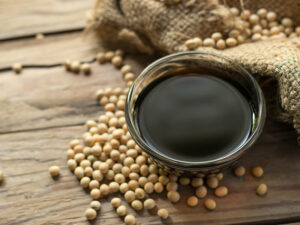
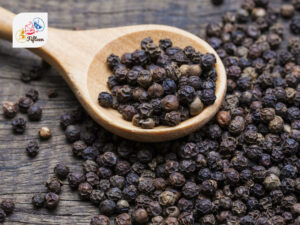
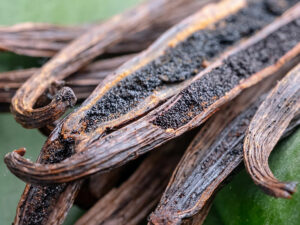
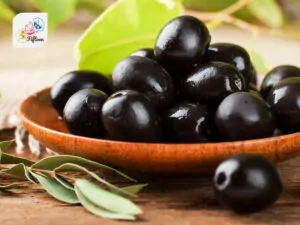
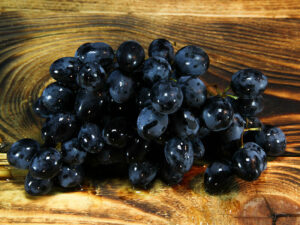
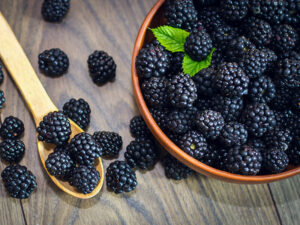
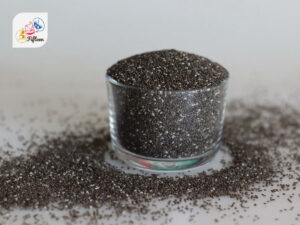
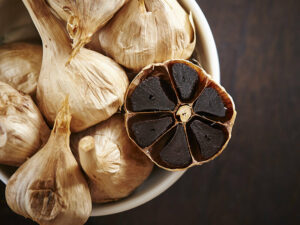
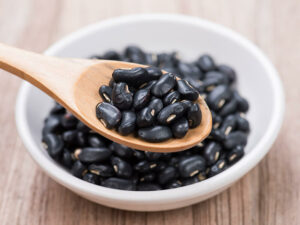
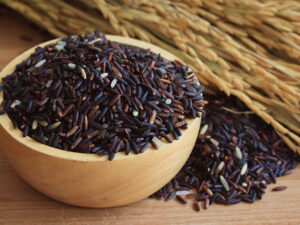
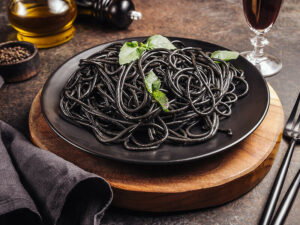
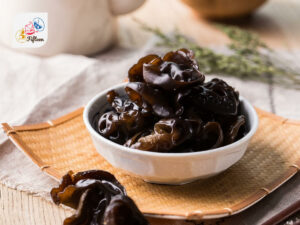
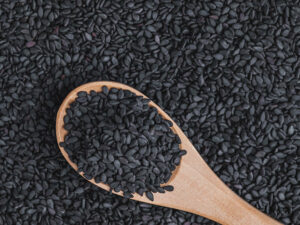
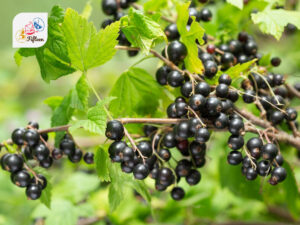
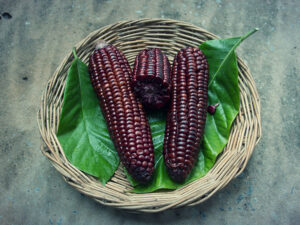

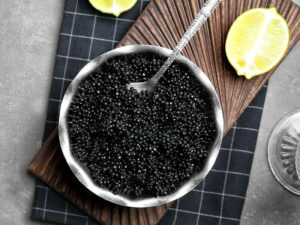
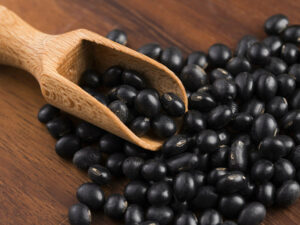
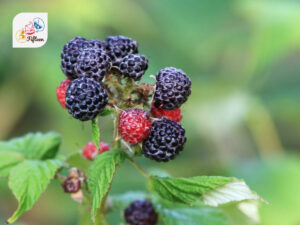
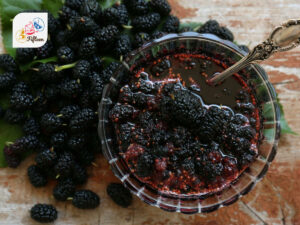
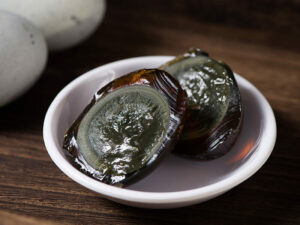
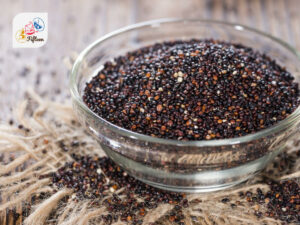
Jamie Scott
Editor in Chief, Senior Content Writer
Expertise
Home Cooking, Meal Planning, Recipe Development, Baking and Pastry, Food Editor, Cooking-video Maker, Western Food Evaluation Expert
Education
Le Cordon Bleu College of Culinary Arts
Local Community College, New York, NY
Jamie Scott is a skilled culinary expert and content creator specializing in Western cuisine. With over 15 years in the culinary field and formal training from Le Cordon Bleu, Paris, Jamie deeply understands how to blend nutrition with delicious flavors. His passion for cooking matches his commitment to making healthy eating accessible and enjoyable.
On Fifteen.net, Jamie brings a fresh perspective to classic dishes and beverages, offering readers insightful recipes, cooking tips, and a fresh view on meal planning that emphasizes taste, health, and simplicity.